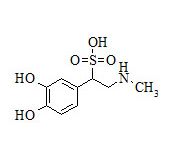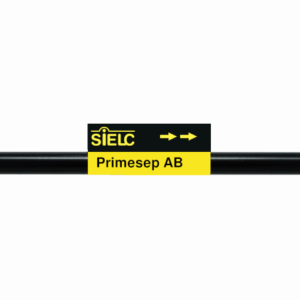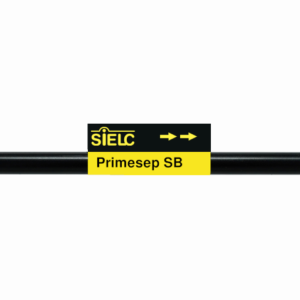Applications:
HPLC Analysis of Epinephrine and Epinephrine Sulfonate on Primesep AB Column
May 12, 2015
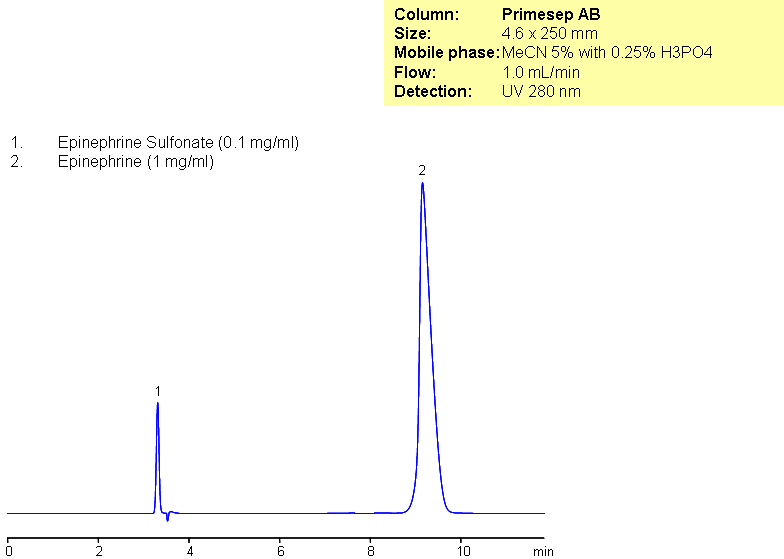
Epinephrine and epinephrine sulfonate were analyzed using Primesep AB, a reverse-phase column with both acidic and basic embedded ion-pairing groups. This method is LC/MS compatible.
| Column | Primesep AB, 4.6×250 mm, 5 µm, 100A |
| Mobile Phase | MeCN/H2O – 5/95% |
| Buffer | H3PO4 – 0.25% |
| Flow Rate | 1.0 ml/min |
| Detection | UV, 280 nm |
| Class of Compounds |
Drug, Hydrophilic, Ionizable, Vitamin, Supplements |
| Analyzing Compounds | Epinephrine, Epinephrine Sulfonate |
Application Column
Primesep AB
Column Diameter: 4.6 mm
Column Length: 250 mm
Particle Size: 5 µm
Pore Size: 100 A
Column options: dual ended
Epinephrine Sulfonate
UV Detection

HPLC Separation of Epinephrine and Epinephrine Sulfonate
June 5, 2011
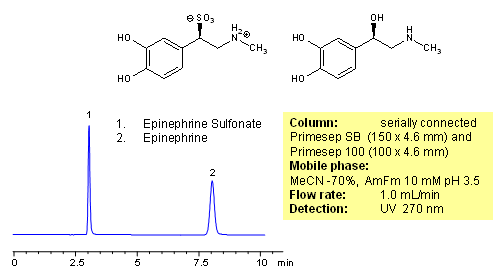
Epinephrine and epinephrine sulfonate are separated on combination of Primesep 100 and Primesep SB HPLC columns. Primesep 100 column retains epinephrine by combination of reversed-phase and cation-exchange mechanisms. Epinephrine sulfonate is retained by weak reversed-phase mechanism. Due to strong zwitter-ionic nature of epinephrine sulfonate, ionic interaction is not available for this molecule. Compounds can be monitored by UV, ELSD, CAD or LC/MS.
| Column | Primesep SB, Primesep 100 4.6×250 mm, 5 µm, 100A |
| Mobile Phase | MeCN/H2O – 70/30% |
| Buffer | AmFm |
| Flow Rate | 1.0 ml/min |
| Detection | UV, 270 nm |
| Class of Compounds |
Drug, Hydrophilic, Ionizable, Vitamin, Supplements |
| Analyzing Compounds | Epinephrine, Epinephrine Sulfonate |
Application Column
Primesep 100
The Primesep family of mixed-mode columns offers a wide variety of stationary phases, boasting unprecedented selectivity in the separation of a broad array of chemical compounds across multiple applications. Corresponding Primesep guard columns, available with all stationary phases, do not require holders. SIELC provides a method development service available to all customers. Inquire about our specially-tailored custom LC-phases for specific separations.
Select optionsPrimesep SB
The Primesep family of mixed-mode columns offers a wide variety of stationary phases, boasting unprecedented selectivity in the separation of a broad array of chemical compounds across multiple applications. Corresponding Primesep guard columns, available with all stationary phases, do not require holders. SIELC provides a method development service available to all customers. Inquire about our specially-tailored custom LC-phases for specific separations.
Select optionsEpinephrine Sulfonate
UV Detection

HILIC Separation of Epinephrine and Epinephrine Sulfonate
August 22, 2008
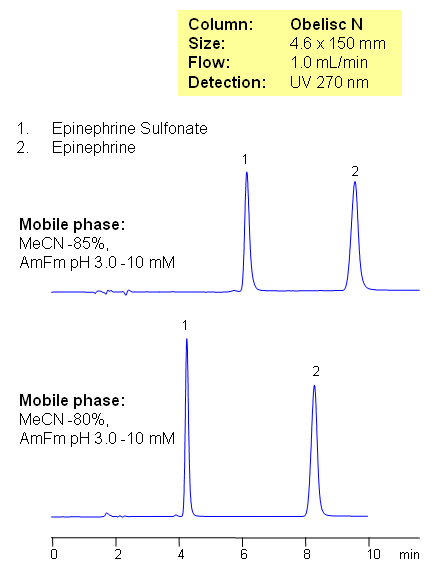
Epinephrine (also referred to as adrenaline) is a hormone and neurotransmitter. It is a catecholamine, a sympathomimetic monoamine derived from the amino acids phenylalanine and tyrosine. This method can be used to determine and quantitate epinephrine and epinephrine sulfonate in biological fluids (urine, blood, serum) and drug formulations. Obelisc N columns are used to retain and separate epinephrine and epinephrine sulfonate in mixed-mode hydrophilic interaction chromatography. Epinephrine is retained by the combination of cation-exchange and HILIC mechanisms. Epinephrine sulfonate is retained by HILIC mechanism. Buffer concentration and pH, as well as the amount of acetonitrile, can be used to adjust retention of both compounds. Both compounds can be detected by UV, ELSD and LC/MS. Preparative separation is possible with volatile mobile phases (ammonium formate or ammonium acetate.
| Column | Obelisc N, 4.6×150 mm, 5 µm, 100A |
| Mobile Phase | MeCN/H2O |
| Buffer | AmFm pH 3.0 |
| Flow Rate | 1.0 ml/min |
| Detection | UV, 270 nm |
| Class of Compounds |
Drug, Hydrophilic, Ionizable, Vitamin, Supplements |
| Analyzing Compounds | Epinephrine, Epinephrine Sulfonate |
Application Column
Obelisc N
SIELC has developed the Obelisc™ columns, which are mixed-mode and utilize Liquid Separation Cell technology (LiSC™). These cost-effective columns are the first of their kind to be commercially available and can replace multiple HPLC columns, including reversed-phase (RP), AQ-type reversed-phase, polar-embedded group RP columns, normal-phase, cation-exchange, anion-exchange, ion-exclusion, and HILIC (Hydrophilic Interaction Liquid Chromatography) columns. By controlling just three orthogonal method parameters - buffer concentration, buffer pH, and organic modifier concentration - users can adjust the column properties with pinpoint precision to separate complex mixtures.
Select optionsEpinephrine Sulfonate

